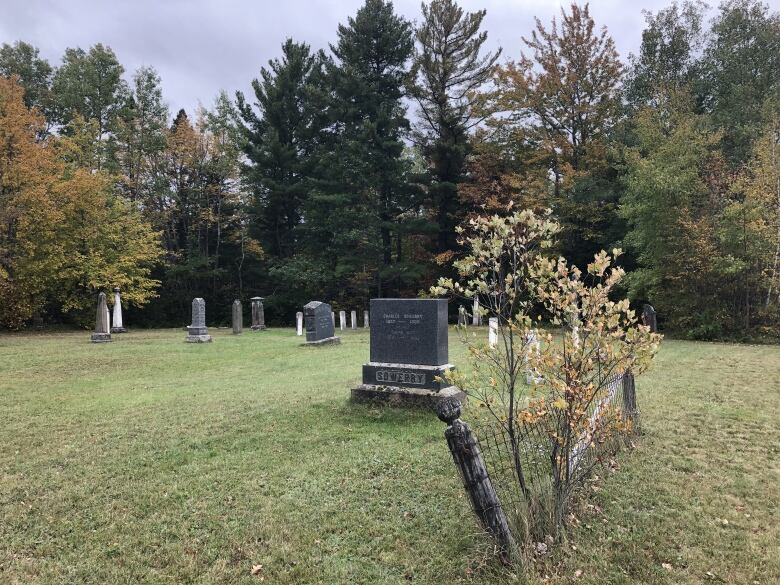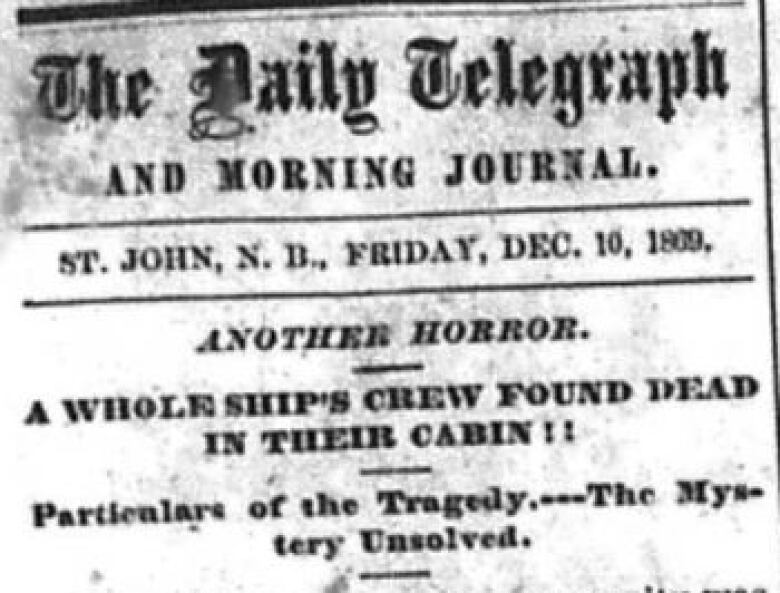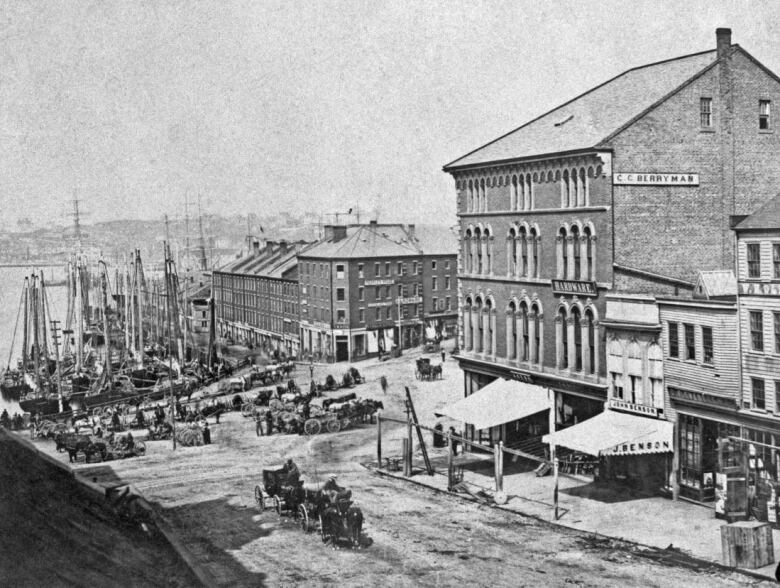Gravestone in rural New Brunswick reveals mysterious deaths in 1869
Historian and educator James Upham shares story of men who died aboard the E.B. Ketchum

In an old cemetery, in what used to be a booming part of New Brunswick,James Uphamrecently discovered a curious gravestone from 1869.
TheMoncton historian and educator was out for a bike ride in the Memramcook area when he stopped at acountry graveyard, across from a small church, for a rest and asnack.
"I spot a stone that looks a bit odd, start reading it and discovered that there is actually quite a gigantic mystery here."
The headstone marks the final resting place of Furdinand Dernier, 29,and James Irving, 21, "who mysteriously died in the cabin of the E.B.Ketchum Dec. 9th, 1869."
"Looking at it, right off the bat, it's just a regular old 'in memory of some dude," Upham said of the stone. "And then, wait a minute, there's two guys here."

Thatweathered inscription was enough forUpham to launch a research mission. Astory in aSaint John newspaper, the Daily Telegraph and Morning Journal,from the day after thedeaths shed some light on what happenedto the young men on board the schooner.
The headline reads: ANOTHER HORROR. A WHOLE SHIP'S CREW FOUND DEAD IN THEIR CABIN!!
The story goes on to detail who the members of the crew were and what might have happened.
The E.B. Ketchumwas tied up in Saint Johnwhen the captain went ashore for the night. The crew, including Irving, remained on board, Upham said.
"They seem to have closed up the vessel, and they seem to have put a fire on, and that's really all we know until the next morning, when the captain came back and opens up the hatch and there's four dead men inside."

According to the newspaper article, "the community was shocked beyond description, andthe police and coroner were called to investigate."
For Upham, the story gets even more interesting when a Sgt.Dobson boards the vessel and discovers two of the dead men showed no sign of struggle, while another had a bloody nose and a black eye.

Dernier and Irving were brothers-in-law. It was Irving's father and Dernier's father-in-law, Capt.John Irving, who owned the vessel.
The inscription at the bottom of their gravestone goes on to read,"True friends while life lasted. In death, they're not parted."
Part of the magic of history, for Upham,isimagining what life would have been like for these friends back in 1869.
"They worked together on a day-to-day basis. They would have known each other's day-to-day struggles and problems. And there came a point where they ended up dying together underbizarre circumstances, and people stood exactly where we are right now at this grave, burying them, going, 'What happened?'"
Boomtown, N.B.
The community of Dover is now part of Memramcook, but in 1869, Upham explains, it was a flourishingcommunity in a very new country.
"There is oil exploration going on here at the time, believe it or not. There is a thriving lumber economy. There's a shipbuilding economy there. This is a growing, thriving building community where people are coming to and they're excited."
On the other hand, Monctonwas "clawing its way back" from having lost its status as a town.
"Dover and Moncton would have been quite comparable. And the real power along this river, in this region, is Dorchester. Dorchester is the shire town of Westmorland County. That's where the lawyers are, the judges are, the courts are, the prison is there."

For Upham the story is an example of how one small piece of history, a gravestone, can connect so many communities and so many people.
E.B. Ketchum, for whom the boat was named, was the secretary of the Albert coal mine nearHillsborough.
"[It was] one of the most profitable ventures in New Brunswick at the time. So we have some of the most important New Brunswick families drawn together around this one boat atsouth Market Slip in Saint John where four guys mysteriously die, one of whom clearly seems to have been in a struggle."
Death by turnip?
According to Upham's research, the coroner's report issued within a few days blamed the deaths on a fire onboard the schooner, likely set toprevent a shipment of turnips from freezing.
"They seal up the cabin, put on the fire, and it's held by the commission at the time that the buildup of gases from the stove in the cabin leads to their death," he said.

The newspaper story describes very crude living conditions on board and lists the items that were "lying aboutthe cabin."
"A basket of meat, some bread, and other stores, some portions of clothing that emitted an unwholesome odour, and the bedding on which the vessel's crew slept their last sleep."
All of these little details of what life was like for people who lived and worked in New Brunswickmore than 150 years ago fascinateUpham, and drawhim into old country graveyards, museums, and libraries.
"We have these spots where you can pull over and connect to hundreds and thousands of different incredible stories, and they tend to be hiding in plain sight."
with files from Information Morning Moncton, Julia Wright, Khalil Akhtar












_(720p).jpg)


 OFFICIAL HD MUSIC VIDEO.jpg)
.jpg)



























































































